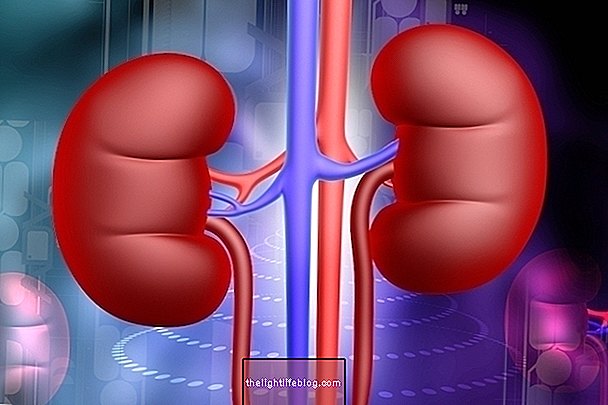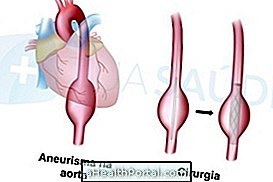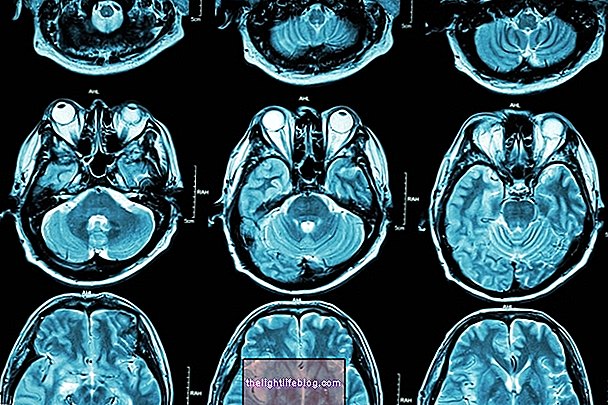Hemoptysis is the scientific name given to bloody cough, which is usually related to pulmonary changes, such as tuberculosis, chronic bronchitis, pulmonary embolism and lung cancer, for example, which can lead to significant blood loss through the mouth, so it is important to go immediately to the hospital so that treatment can be started and complications are prevented.
Hemoptysis is considered when the bleeding originates from the lung and loss of 100 to more than 500 mL of blood is seen in 24 hours, however this value may vary according to the responsible physician. The amount of blood lost is considered serious when it can put the person's life at risk due to the obstruction of the airway by the accumulation of blood.

Main causes of Hemoptysis
Hemoptysis can be a symptom of several diseases, but it is more often related to inflammatory, infectious or malignant changes in the lung, or blood vessels that reach this organ and promote its irrigation, the main ones being:
- Tuberculosis;
- Pneumonia;
- Chronic bronchitis;
- Pulmonary embolism;
- Lung cancer and lung metastases;
- Bronchiectasis;
- Behçet's disease and Wegener's granulomatosis, which are diseases characterized by inflammation of blood vessels throughout the body.
Coughing up blood can also happen as a result of invasive diagnostic or treatment procedures that may have caused damage to the upper respiratory tract, such as mouth, nose or throat, and may also originate in the gastrointestinal tract, however when hemoptysis occurs in these two situations, it is called pseudo hemoptysis.
Know other causes of bloody cough.
How the diagnosis is made
The diagnosis of hemoptysis is made mainly by assessing the symptoms presented and the person's medical history. Thus, in case the person has a bloody cough for more than 1 week, weight loss for no apparent reason, high fever, change in breathing and / or chest pain, it is recommended to go immediately to the hospital to have tests that can identify the cause of the symptoms.
The doctor usually recommends the performance of imaging tests, such as chest x-rays and computed tomography in order to assess the lungs and identify any signs suggestive of bleeding that could compromise the person's life. In addition, laboratory tests are requested, such as coagulation and blood count to check the quantity and characteristics of circulating blood cells.
The diagnosis of hemoptysis is also made through bronchoscopy, an examination in which a small flexible tube with a microcamera attached to its end is inserted into the mouth or nose and goes up to the lung, allowing the doctor to observe the entire pulmonary structure and respiratory tract and identify the bleeding site. Understand how bronchoscopy is done.
Treatment for hemoptysis
The treatment for hemoptysis is done according to the cause and the amount of blood lost, aiming to control the bleeding and keep the patient stable. Thus, bronchoscopy or arteriography may be recommended and, depending on the severity, transfusion of plasma and platelets may be indicated.
When bleeding is uncontrollable, even though measures have already been taken to control it, a surgical procedure is indicated, such as embolization of the bronchial artery, for example, in which the doctor, with the help of a small flexible tube and a micro camera in the tip, can identify the location and stop the bleeding.
According to the cause of hemoptysis, the doctor may also recommend other treatments, such as the use of antibiotics, in case the bleeding is due to infections, anticoagulants, anti-inflammatory drugs or, if it is due to cancer lung cancer, there may be an indication for chemotherapy.
Was this information helpful?
Yes No
Your opinion is important! Write here how we can improve our text:
Any questions? Click here to be answered.
Email in which you want to receive a reply:
Check the confirmation email we sent you.
Your name:
Reason for visit:
--- Choose your reason --- DiseaseLive betterHelp another personGain knowledge
Are you a health professional?
NoMedicalPharmaceuticalsNurseNutritionistBiomedicalPhysiotherapistBeauticianOther
Bibliography
- ITTRICH, Harald; BOCKHORN, Maximilian; KLOSE, Hans; SIMON, Marcel. The Diagnosis and Treatment of Hemoptysis. Deutsches Ärzteblatt International. 114. 371-381, 2017
- WEBMD. Coughing Up Blood (Hemoptysis). Available in: . Accessed on 12 Nov 2019





















